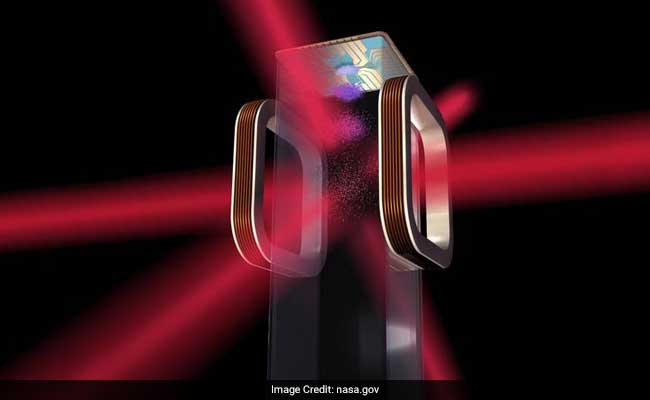
NASA’s new creation- “Coolest spot on Universe”
What is NASA’s next take on the Universe and Gravity? According to the recent reports, NASA is trying to create the Coolest spot on Universe. Scientists have the opinion that this might help them to find more about gravity and origination of Earth.
NASa’s new take on creating Coolest spot on Universe is to find out more details about gravity and dark matters. NASA is on its way to send a giant ice chest sized box to ISS. ISS will next try to freeze the gas atoms which will next help them to create the Coolest spot on Universe.
According to NASA reports, “The box will have lasers, a vacuum chamber and an electromagnetic “knife”, which will help in cancelling out the energy of gas particles, slowing them until they’re almost motionless.”
The set of instruments designed by NASA to create the Coolest spot on Universe is acronym as’CAL’. NASA has scheduled CAL to start its ride off to Space in August 2017 along with SpaceX CRS-12. CAL instrument will be used to create freeze-d gas atoms with temperature billion down than that of the normal.
“After studying these hyper-cold atoms, it could reshape our understanding of matter and the fundamental nature of gravity,” said CAL Project Scientist Robert Thompson of JPL, according to PTI. HE also mentioned, “The experiments we’ll do with the Cold Atom Lab will give us insight into gravity and dark energy – some of the most pervasive forces in the universe,”
Why will atoms be cooled in CAL to create Coolest spot on Universe?
Scientists are trying to create the Coolest spot on Universe because they want to find out more insights on gravity and dark matters. For doing the same, NASA has designed an instrument called CAL which will be used to create gas atoms frozen at temperature billions down the normal temperature.
After the atoms are cooled to extreme temperatures, they will be pressed inside on CAL, where they will form a distinct state of matter known as a Bose-Einstein condensate. In this particular state, simple rules of physics recede, and quantum physics begins to take over the whole scenario. They can be observed behaving less like particles and more like waves. Rows of atoms move in concert with one another as if they were riding a moving fabric. These mysterious waveforms have never been seen at temperatures as low as what CAL will achieve.
NASA has never created or observed something like Bose-Einstein which condensates in space. On Earth, the pull of gravity causes atoms to continually settle towards the ground, meaning they are typically only observable for fractions of a second. Even for NASA, it will be the first time in its history to plant a made place which will become the Coolest spot on Universe.
According to the reports, Bose-Einstein condensates are a “superfluid” which is a kind of fluid with zero viscosity, where atoms move without friction as if they were all one, solid substance.
According to Anita Sengupta of JPL, Cold Atom Lab project manager, “if you had superfluid water and spun it around in a glass, it would turn forever. There’s no viscosity to slow it down and dissipate the kinetic energy. If we can better understand the physics of superfluids, we can learn to use those for more efficient transfer of energy,”


